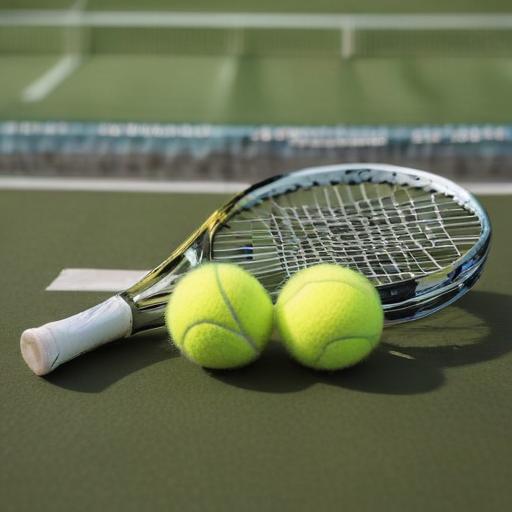The Bryan brothers, Bob and Mike, stand at the threshold of a new chapter in tennis history as they near induction into the International Tennis Hall of Fame in Newport, Rhode Island. Their storied partnership reshaped doubles for nearly two decades, turning a specialized game into a global spectacle and turning two mirror-image twins into one of sport’s most enduring legends.
Across a dazzling run that lasted from 1998 to 2020, the Bryans piled up a record 119 titles, including 16 Grand Slams with five US Opens, and a gold medal at the Olympics. They spent 438 weeks at No. 1 in the world, a testament to a combination of blistering power, flawless teamwork, and a connection that many described as telepathic. Mike explains that what set them apart wasn’t merely technique—it was a rare, almost indefinable bond that let them anticipate each other’s moves before the other even registered them.
Their ascent was as much about routine as raw talent. For the first decade, they lived nearly every moment in tandem—sharing a room on tour, meals, practice sessions, and even a band. They were a package deal in every sense: two players, one mindset, one shared path. They’ve recalled a childhood that started with their first tournament at age six, and by the end of their careers they’d logged thousands of matches together, becoming a blueprint for doubles greatness.
But their relationship wasn’t always harmony in harmony. They’ve candidly described blowouts and confrontations that could turn physical—on and off the court. Bob recalls a moment of anger that led to breaking Mike’s guitar, while Mike recounts a contentious Wimbledon ride where a fight in a car in London shook the vehicle as they drove away from a victory. Yet even at their worst, the Bryans found a way back to the court, back to the partnership that defined them. “We had this unbreakable bond,” Bob says, acknowledging that twin dynamics don’t come with a reset button, but they do come with a deep, forgiving resilience.
The science of their success was often described in metaphors rather than measurements: a “twin energy,” an almost choreographed sense of position, and a shared rhythm that enabled them to cover every inch of the doubles court in perfect harmony. They’ve joked that their telepathic connection even extended to the most ordinary errands—independently shopping for couches in different parts of the country on the same day and ending up with the same piece of furniture.
As they near the Hall of Fame ceremony, it’s clear that their influence extends beyond the hardware in their trophy cases. They helped redefine what doubles teams could be—endlessly communicative, relentlessly compatible, and relentlessly ambitious. Their video tips that circulated late in their careers gave rivals a glimpse of their “secret sauce,” even as opponents struggled to replicate the feel of playing with and against the Bryans. Their impact will endure in how future doubles teams approach strategy, trust, and the nonverbal language of the court.
Their induction is shared with a broader generation of tennis stars: Maria Sharapova joins them in the Class of 2025. Today, the Bryans are part mentors, part ambassadors, and full-time custodians of the sport they helped to immortalize. Now 47, they balance family life with ongoing roles in tennis—Bob captains the U.S. Davis Cup team, Mike coaches, and both still compete in the veterans’ circuits at Wimbledon. “We’re undefeated in retirement” remains a light-hearted boast, but the real victory is a lasting legacy that transcends wins and rankings.
What this story offers readers is more than a celebration of championships. It’s a portrait of how closely aligned goals, relentless practice, and an unwavering belief in a shared purpose can turn a simple collaboration into a cultural touchstone for an entire sport. The Bryans’ journey underscores that the most powerful partnerships in any field aren’t just about the sum of two talents—they’re about a trust that becomes a force multiplier.
Summary
– Bob and Mike Bryan dominated men’s doubles for two decades, winning 119 titles, 16 Grand Slams, and an Olympic gold, while spending 438 weeks at No. 1.
– Their relationship included intense moments and occasional on-court and off-court conflicts, yet their bond remained unbroken and productive.
– They credit a deep, almost telepathic connection, early life routines, and shared experiences for their success.
– They are set to be inducted into the International Tennis Hall of Fame in 2025, joining stars like Maria Sharapova.
– In retirement, they remain active in tennis and family life, continuing to influence the game from coaching and captaincy roles.
Editor’s notes and context
– The Bryan brothers’ story is a compelling case study in long-term teamwork, resilience under pressure, and the importance of nonverbal communication in high-performance partnerships.
– Their career offers lessons for teams beyond sports: sustained trust, clear shared goals, and the ability to navigate conflicts without breaking the core partnership.
– For fans and aspiring players, their journey illustrates how a singular, well-honed dynamic can leave an enduring imprint on a sport and inspire future generations to pursue excellence together.
If you’re looking for a hopeful takeaway, it’s this: through disagreement, reconciliation, and relentless collaboration, the Bryans built a legacy that proves New York-sized ambition and old-fashioned brotherhood can redefine a sport—and endure long after the last match is played.
